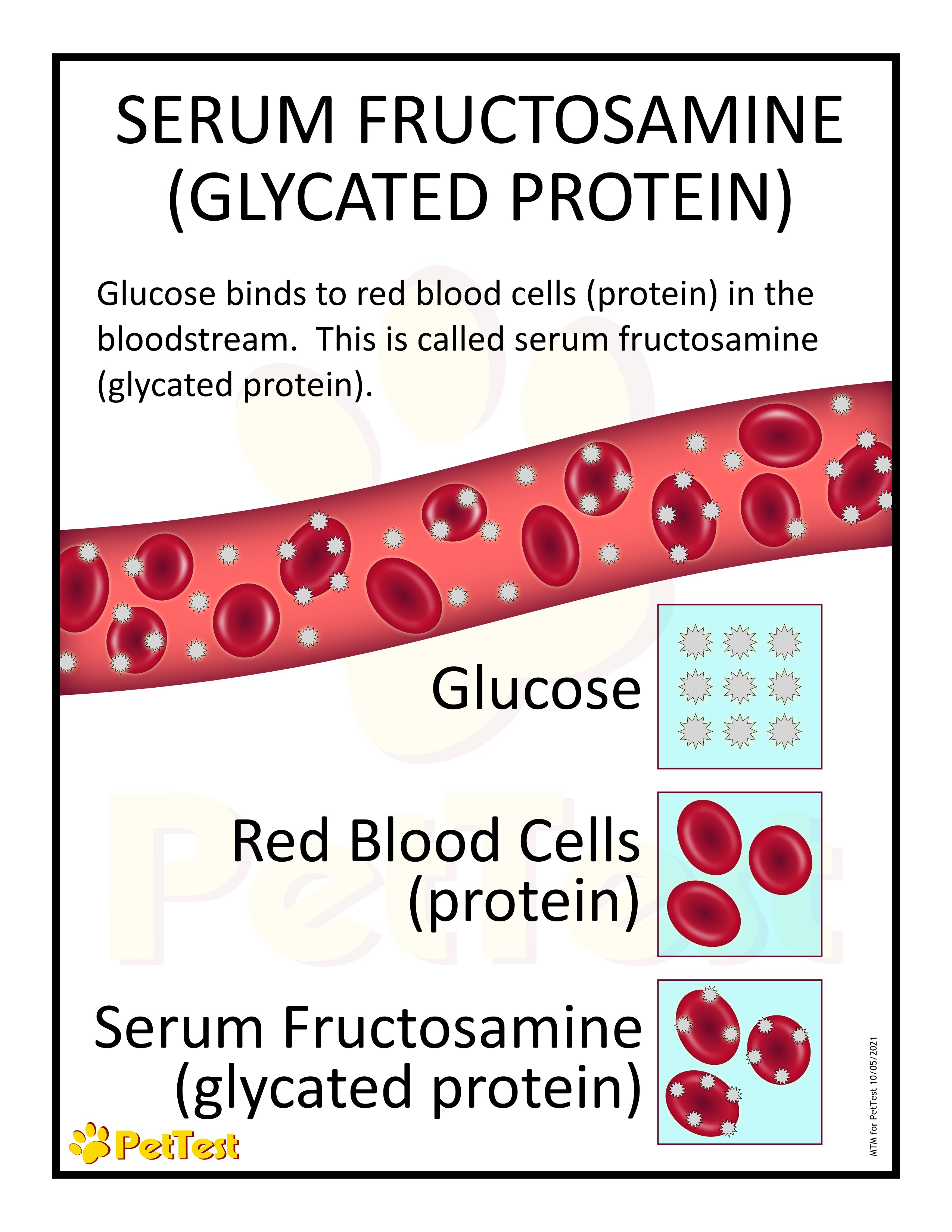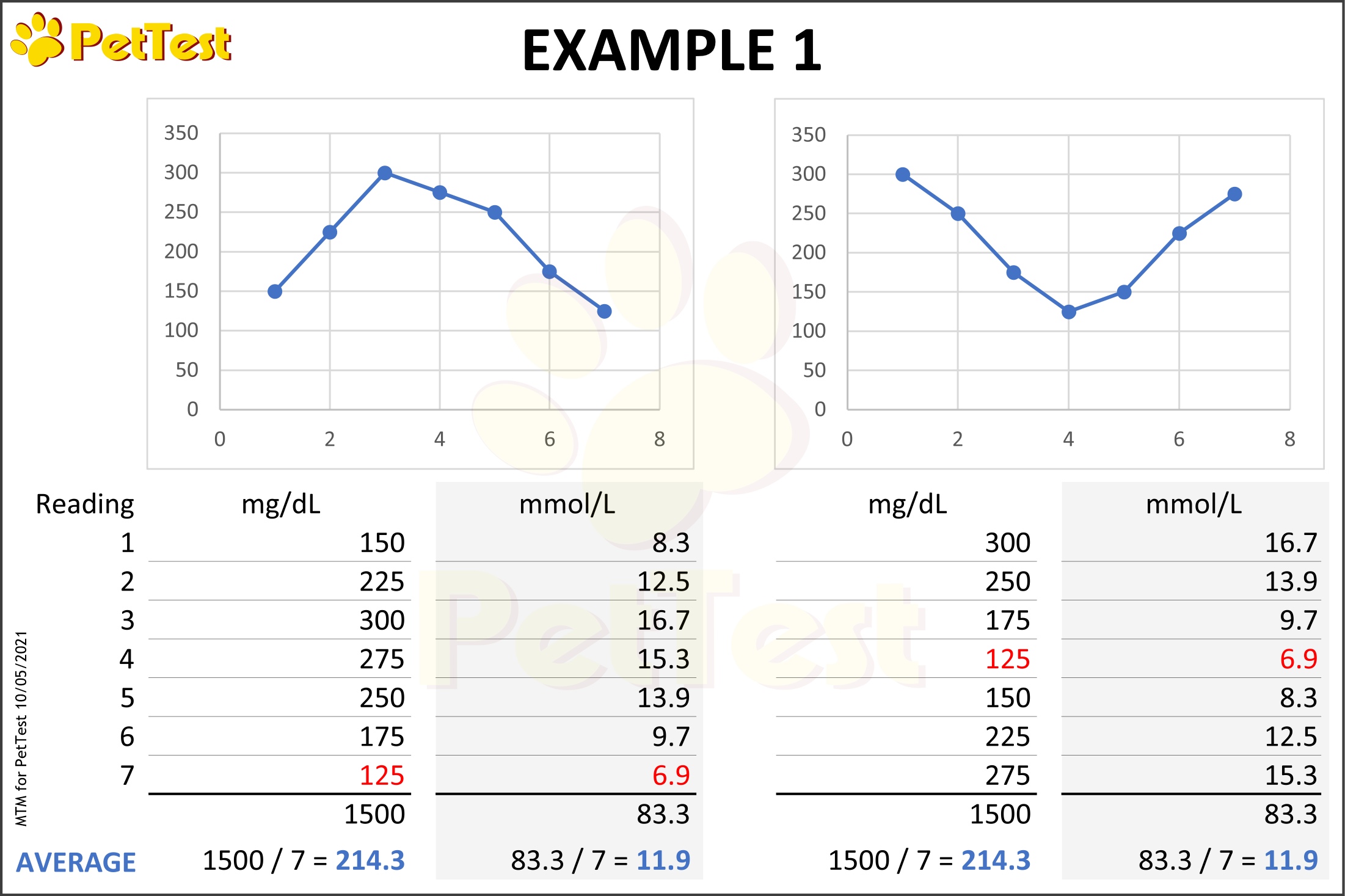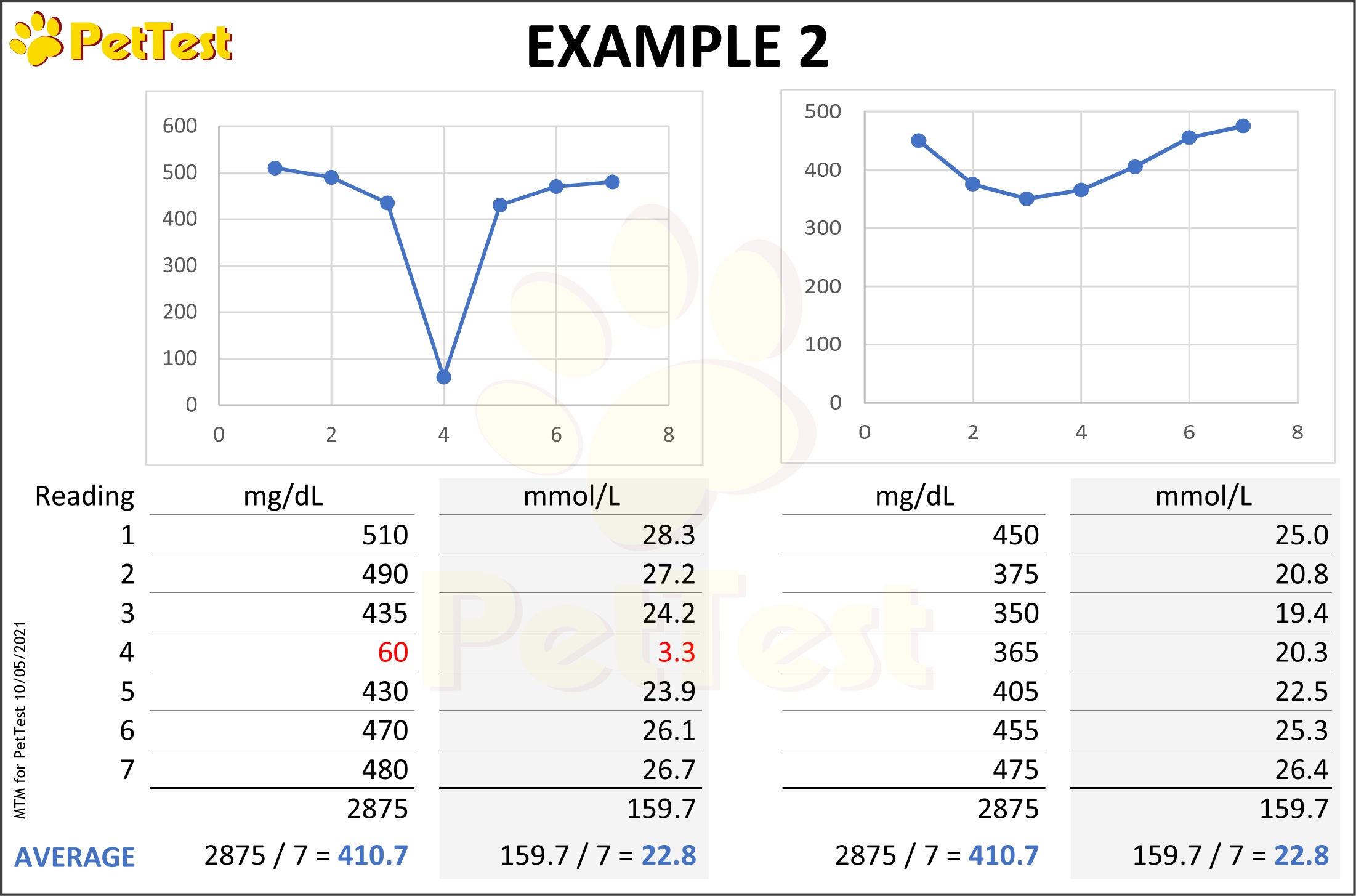Fructosamine Tests
After Lucy was diagnosed with diabetes and had healed from acute pancreatitis and a tooth extraction I started working on getting blood glucose down to a better range. The first two curves were run at the vet’s office but once I started testing blood glucose levels at home I ran curves at home and sent them into the vet’s office. About six months after into diagnosis Lucy went to the vets for a bi-annual check-up. They recommended a fructosamine test and told me that it would show an average of blood glucose levels. I was a bit confused as to why this test was necessary since I was testing blood glucose levels. I declined the test and went home to read up on exactly what a fructosamine test was.
Today I want to explain what a fructosamine test is, so grab a cup of your favorite caffeinated beverage and let’s get to it!
What is a fructosamine test?
A fructosamine test is a blood test run by vets to confirm diabetes diagnosis and to see what the average blood glucose level is over a period of two to four weeks. Serum fructosamine tells us what the average is.
What is serum fructosamine?
Red blood cells are made up of proteins. Glucose in the blood binds to the red blood cells causing serum fructosamine (glycated protein). Fructosamine formation is related to the degree and duration of high blood glucose (hyperglycemia).

What are fructosamine ranges?

*Blood glucose levels are either in a lower range due to excellent blood glucose control or recurrent hypoglycemia.
What are the pros of a fructosamine test?
Fructosamine tests are not affected by stress hyperglycemia. It also confirms whether glucose levels have been elevated for a period of two to four weeks, so it helps confirm diabetes diagnosis.
What are the cons of a fructosamine test?
Hyperthyroidism (Cushing’s Disease) and decreased albumin levels may cause a false negative result in fructosamine tests.
Hemolysis (rupturing of red blood cells) may cause false positive results in a fructosamine test.
Since a fructosamine test gives us a blood glucose average, insulin increases should never be based on fructosamine tests. We do not see blood glucose lows or highs, so a blood glucose curve is necessary for insulin adjustments.
Look at the examples below. In example 1, the average shows that the dog’s blood glucose level controlled, the average is 214.3.
In example 2, blood glucose levels are not well controlled and the average is 410.7. If you look at the first curve there is a low of 60, if insulin is increased based on a fructosamine result, the risk of a critical hypoglycemic event is possible.


IDEXX Laboratories and Merck Animal Health both state that a fructosamine alone should not be used to adjust insulin levels, a blood glucose curve must be run to see where blood glucose levels are. Curves show insulin resistance, Somogyi Effect / rebound and hypoglycemia and they allow us to make safe insulin adjustments.
I hope this blog has given you a better understanding of what a fructosamine test is and you now know why we always state in our Facebook group Diabetic Dog Owners and in our Diabetic Dog Owners University that blood glucose curves are crucial to effectively managing canine diabetes!
Until next week, stay comfy and caffeinated!
If you have any questions, comments or suggestions, please start a conversation below.
Don't have a blood glucose meter to test your dog's blood glucose levels? Order one now! https://shoppettest.com/pettest-meter-kit/
If you are looking for a Facebook community to join for support, I have proudly been an admin in Diabetic Dog Owners for almost five years. You can also join Canine Diabetes Support and Information on Facebook as well.
Be sure to join the PetTest family on Facebook and Instagram. PetTest has fun, interactive posts AND they have fabulous giveaways every week!
Do you need a blood glucose meter kit for your diabetes arsenal? Click here to purchase one today!
For a printable version of this blog click here.

